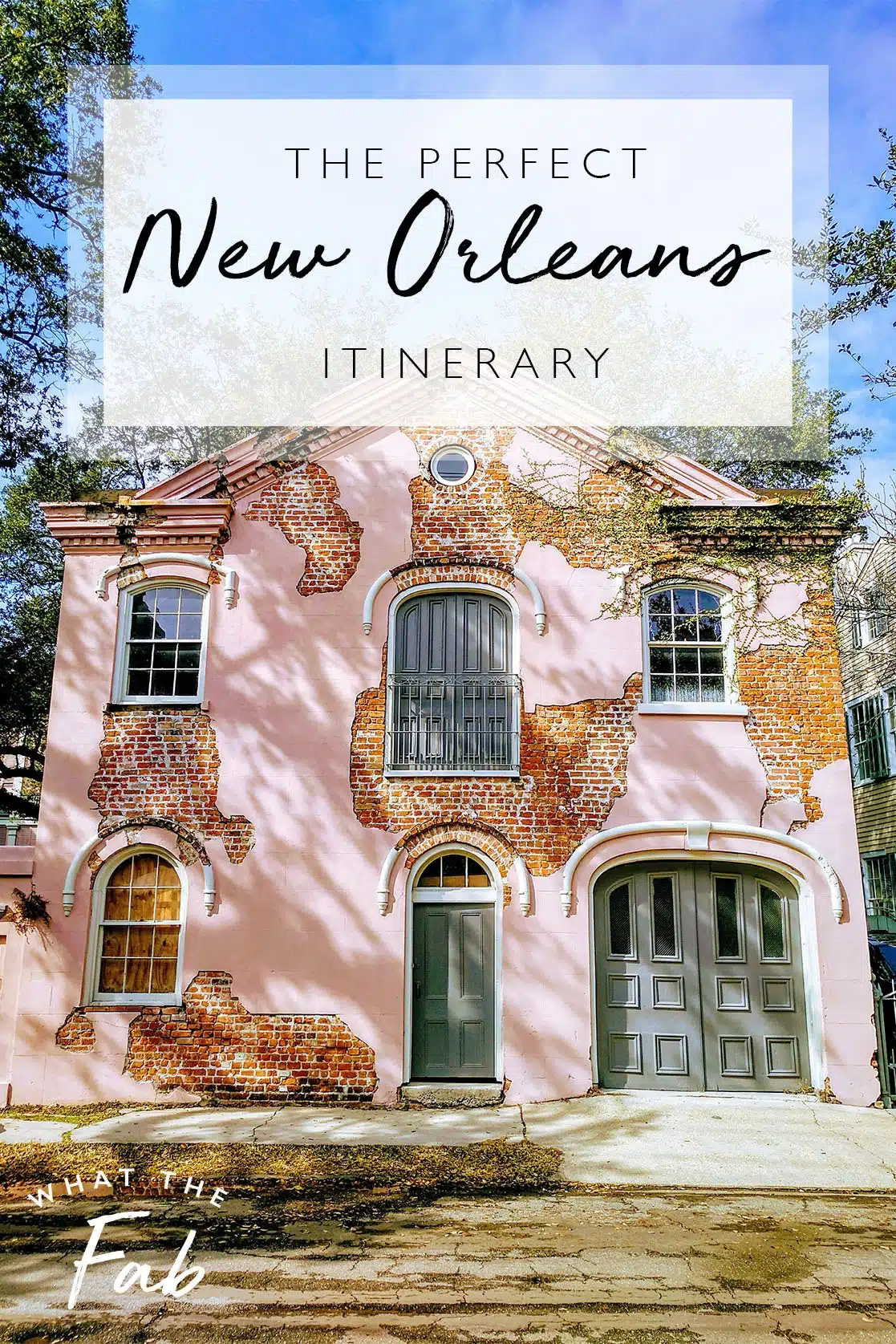
When I think of some of my favorite places to visit in the United States, one of them has to be the city of New Orleans, which is why I’ve created this New Orleans Itinerary!
NOLA has just about everything going for it. There’s a ton of history, both in and out of the famous French Quarter, there’s a whole lot to eat here for New Orleans foodies (Cajun? Creole? Soul food? Yes please!), the architecture is stunning, the jazz is amazing—there’s just so much fun stuff to check out!
Home to arguably one of the most famous carnivals in the world, Mardi Gras in New Orleans is all about good times, with parades and merriment for weeks on end.
New Orleans’ jazz and blues have been a long-time staple of this city’s music scene, and people come from far and wide to enjoy it in some of the many venues that can be found here. One of my absolute favorite experiences that I had in NOLA was going to a jazz club—the music was so beautiful, I legit cried!
So, yeah, as you can probably tell, there is a TON of stuff to do in New Orleans—so much that it can honestly make your head spin.
And that’s where I come in with this list of everything you need to put on your New Orleans itinerary!
This guide features the best things to do in New Orleans so you can create what I would call the perfect New Orleans itinerary. From museums and beautiful old buildings to music venues and grilled oysters, I promise you there’s nothing missing from my super handy guide!
The Perfect New Orleans Itinerary
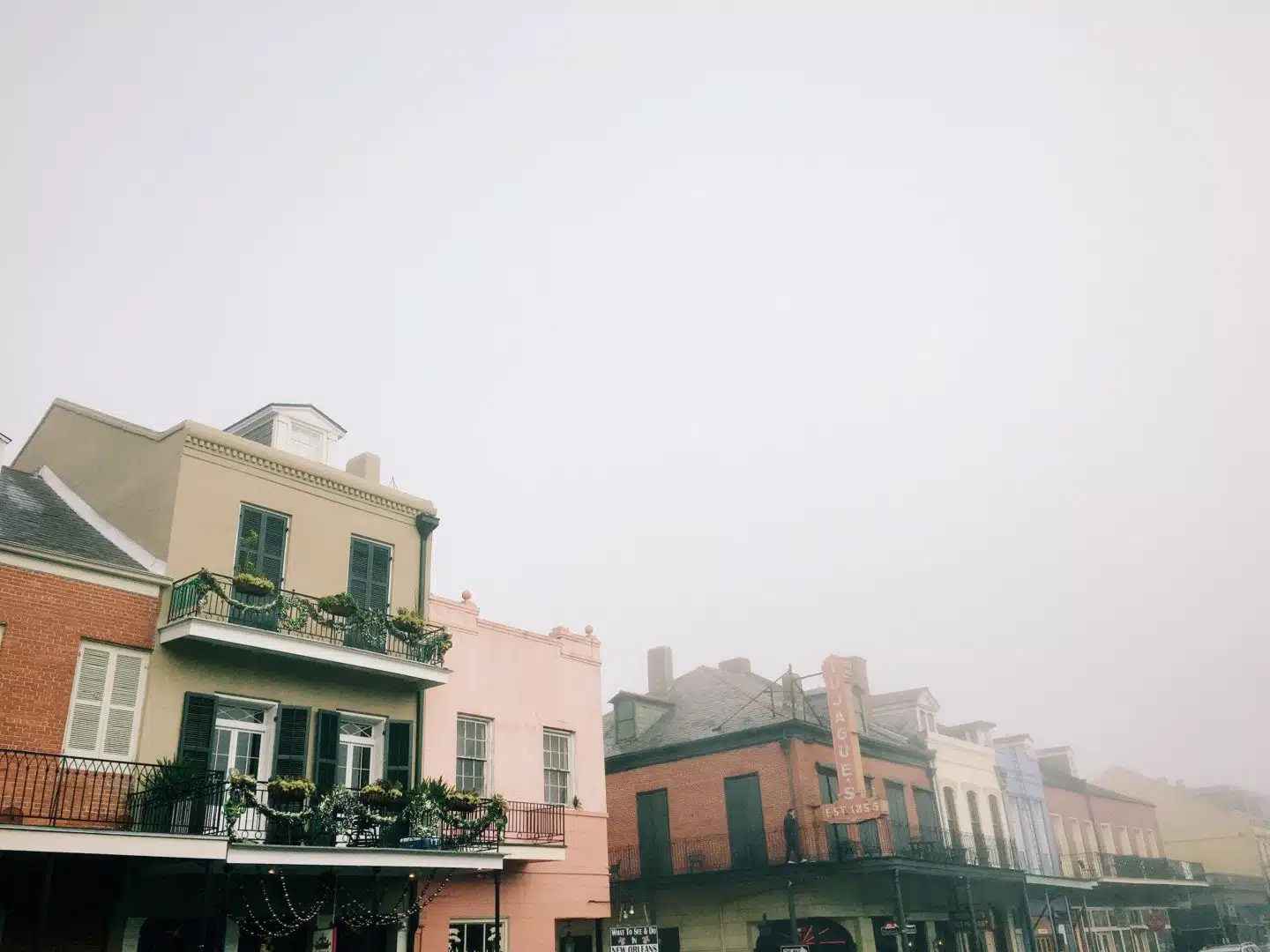
French Quarter
The French Quarter is the oldest (and most famous) neighborhood in New Orleans and was first founded in 1718 as a colony of “New France.” It was actually a walled city. Yep, it used to be French—hence the name and the vibes!
Taking a French Quarter walking tour of this district should definitely be on your New Orleans itinerary.
Fun fact, though: much of the architecture found in the area is actually Spanish, as this European power of the day administered the city in the late 18th century.
The main focus of the French Quarter is Jackson Square. Here you’ll find street performers, buskers, tarot card readers, and a whole lot of other stuff going on. In fact, people have been performing live music at this spot for over 100 years. There’s electric energy to this slice of the city.
At the center of the square is a big statue of former US president Andrew Jackson atop a horse. The square is named after him if you didn’t already guess.
Surrounding the square are colonial-era buildings at their prime, including the St. Louis Cathedral, built under Spanish rule in the 1850s. Other famous spots include well-known thoroughfares like Bourbon Street (more on that later!).
Another thing you should check out in the French Quarter is the French Market, which is where you can browse different food, art, and other produce.
The French Quarter is also the focal point for New Orleans’ infamous Mardi Gras, which definitely deserves its own section!
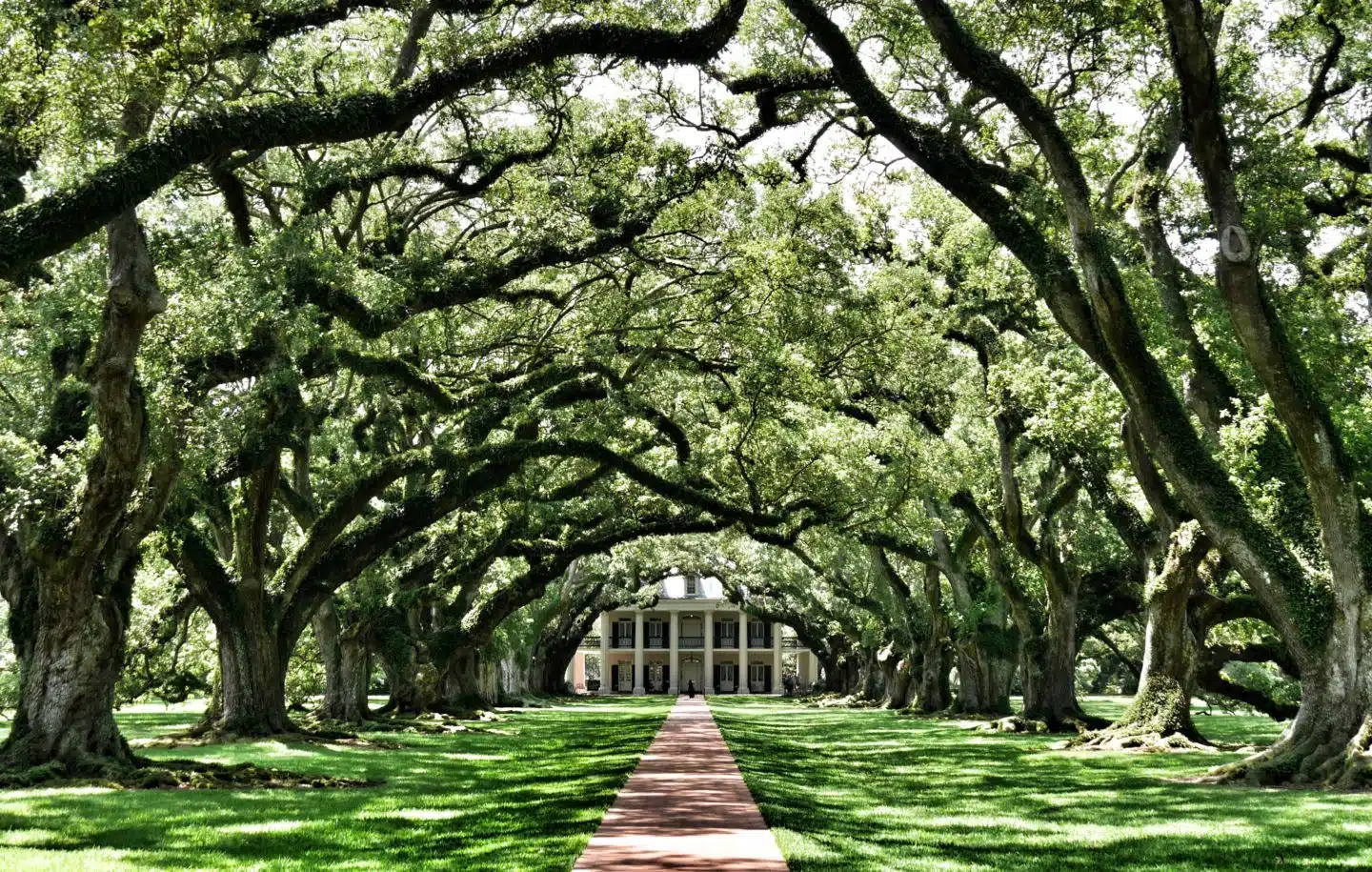
Oak Alley Plantation
Around an hour’s drive from New Orleans proper, Oak Alley Plantation is worth a day trip if you feel like getting out of the sprawl for a minute.
Located on the banks of the Mississippi River, it’s a plantation with more than 200 years of history.
Visually, the main focus of this former sugar cane plantation is the impressive boulevard oaks (28, to be exact) that lead up to the house, giving it its name.
I recommend the slavery exhibit to get a better understanding of how, and why, the property came into being in the first place. There’s a garden to stroll around afterward while you reflect on what you’ve learned.
Inside the “Big House,” the main house may be all antiques, fireplaces, and chandeliers, but it balances that interesting history with poignant, painful stories at the museum.
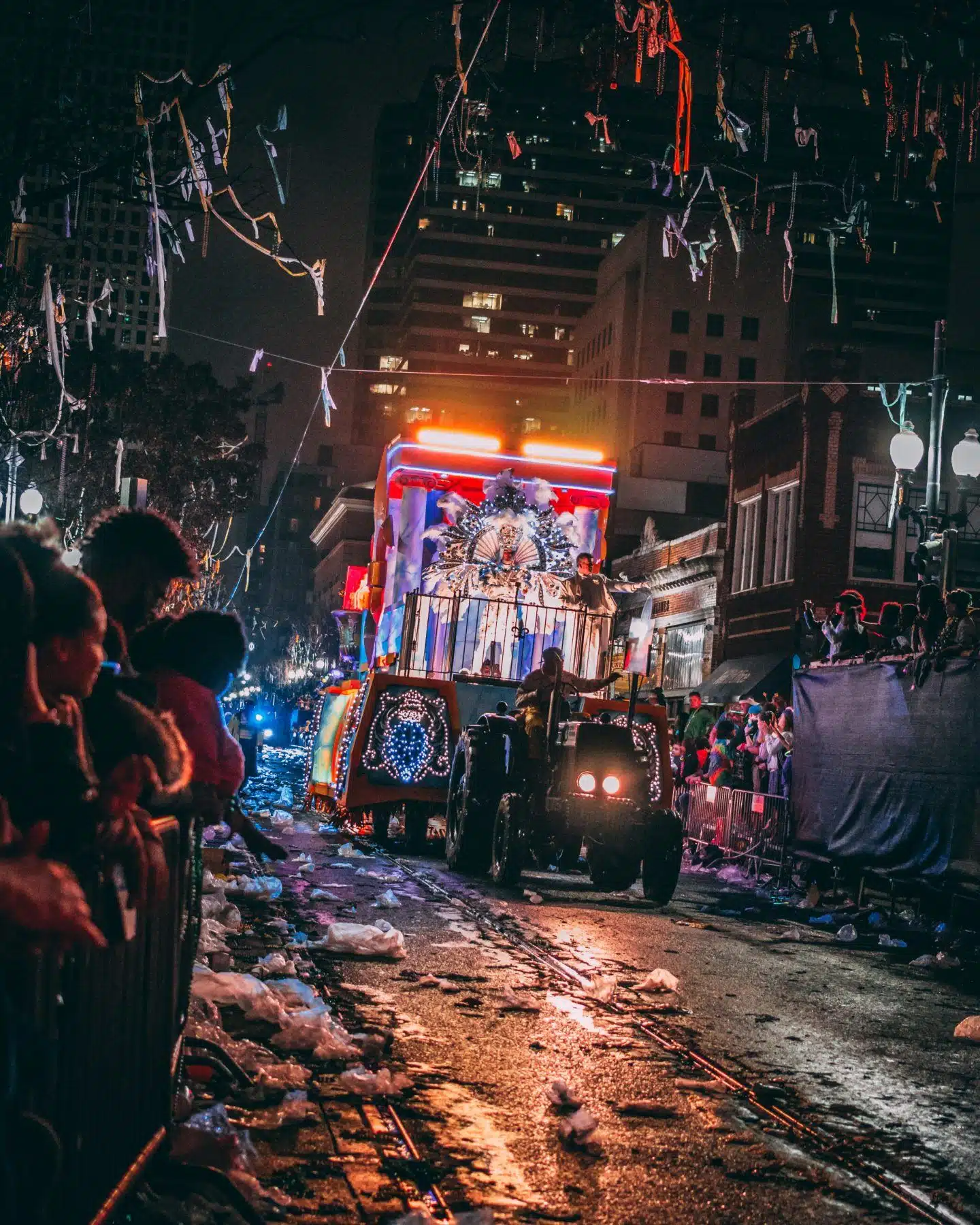
Mardi Gras
Claiming to be “the biggest party of them all,” New Orleans’ Mardi Gras has become world-famous.
The carnival season begins about two weeks before Shrove Tuesday (aka Mardi Gras itself) and is a bonanza of madness and mayhem. Think colorful costumes, parades, food, dancing, masquerade balls, and of course, lots of booze.
It is centered around the French Quarter but naturally spreads through plenty of other neighborhoods in New Orleans.
One thing to note: if you are planning to go to New Orleans for Mardi Gras, then definitely book your accommodation WAY in advance. This globally renowned party makes the city very busy—try 1.4 million in attendance!
My recommendation is to book a historic hotel in the French Quarter with a balcony—that way you can soak up the carnival and all its fun and flavor without having to get lost in the crowds (and you have a bathroom readily available, lol).
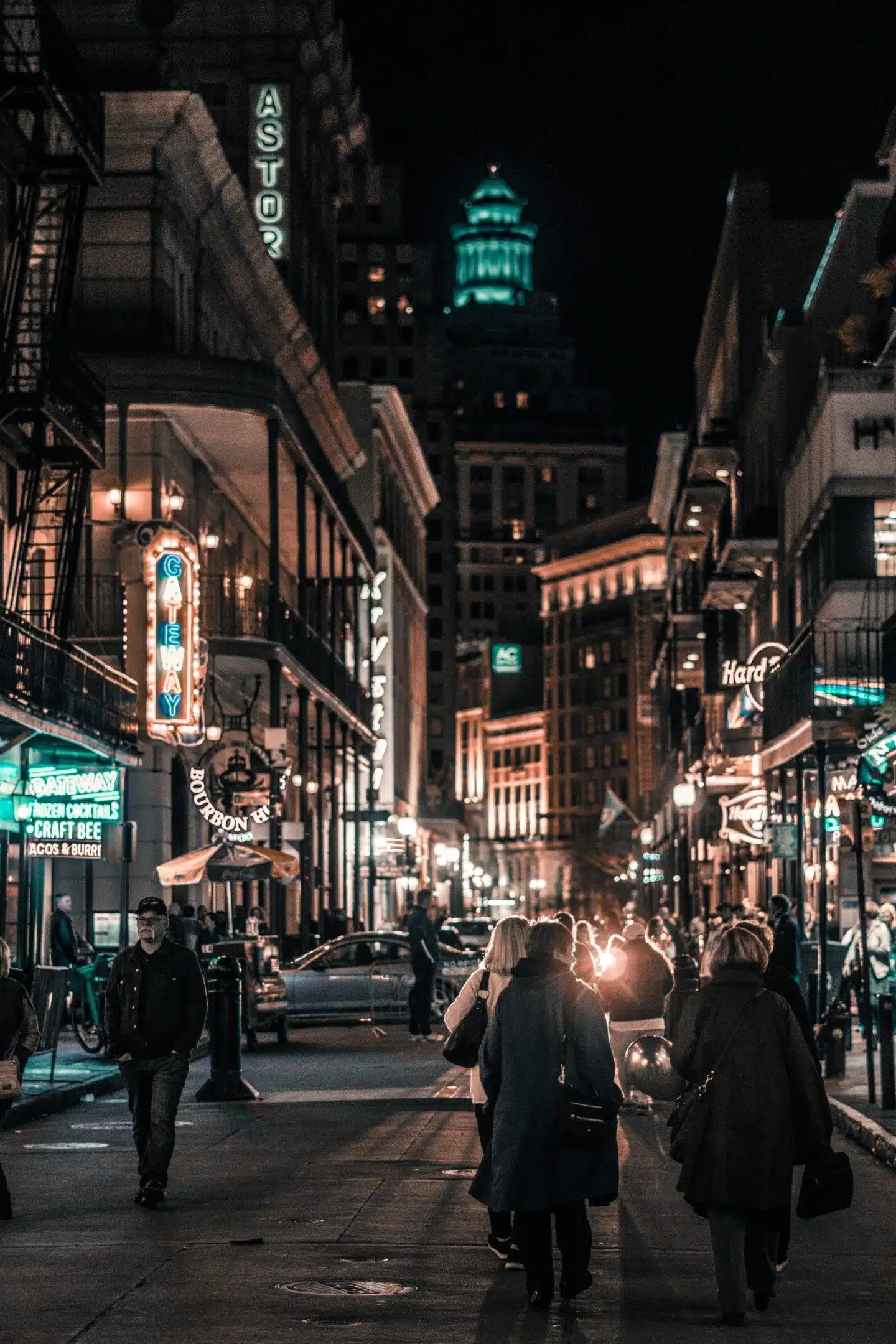
Bourbon Street
Possibly THE most famous (or infamous?) place in all of New Orleans, Bourbon Street is set in the French Quarter and, naturally, draws a whole load of tourists. But that doesn’t mean you shouldn’t see it.
It’s famous for a reason!
The street dates back to the origins of the French Quarter itself and is named in honor of France’s ruling royal family at the time, the House of Bourbon.
It’s not named after the liquor like I’d always thought, but as night time rolls around, everyone there is absolutely liquored up.
Of course, it’s a popular spot during Mardi Gras, but throughout the year, people come for its bars and strip clubs. There are also the local “open container laws” that mean people can wander around with a large plastic cup filled with beer or a cocktail. Which I honestly thought was brilliant and so perfect for me because I’m a lightweight and it takes me a little longer to finish my drinks—so when my crew was ready to leave one bar I could ask for a plastic cup and take the rest of my bevvie with me!
My tip for Bourbon Street? Go hungry, thirsty, and with an open mind ready for good times! Parts of it might feel a bit um…tacky, but it’s part of the NOLA experience.
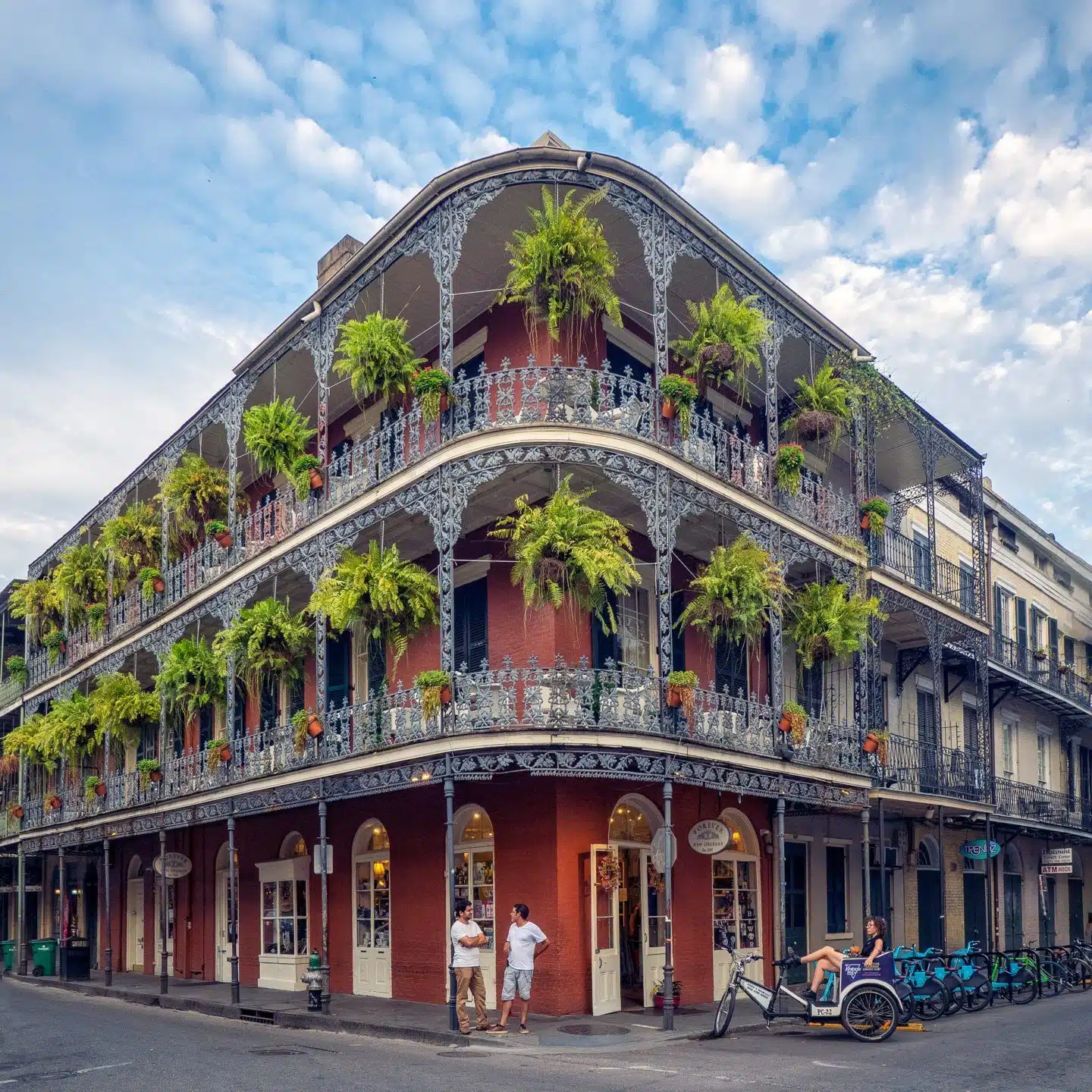
Frenchmen Street
Even though it may seem like it from the name, Frenchmen Street is not in the French Quarter. It’s home to many Creole cottages and townhouses and is cool for a stroll in the daytime.
However, come nightfall, Frenchman Street turns into one huge live music venue. It feels as if almost every single building along this street has some sort of live music pouring out of its doors.
You’ll hear all kinds of music along Frenchman Street, from jazz and blues to something more contemporary. Sometimes, there’ll even be music out on the street itself.
There may be no neon signs and drunk tourists, but behind the old wooden facades of these pretty buildings, the heart of New Orleans beats to a rhythm all of its own. And I far preferred Frenchmen Street to Bourbon Street—it’s like the classier version.
Some recommended venues include classic jazz club The Spotted Cat, The Mason with its Creole food and 19th-century architecture, Snug Harbor, and the Blue Nile, which is considered one of the originals.
After all the music and excitement, head out for some late-night snacks. There are a ton of dining options—from Marigny Brasserie or Creole-Italian cuisine at Adolfo’s to Dat Dog—home of tasty hotdogs, obviously!
Speaking of all that food, let’s delve in deeper!
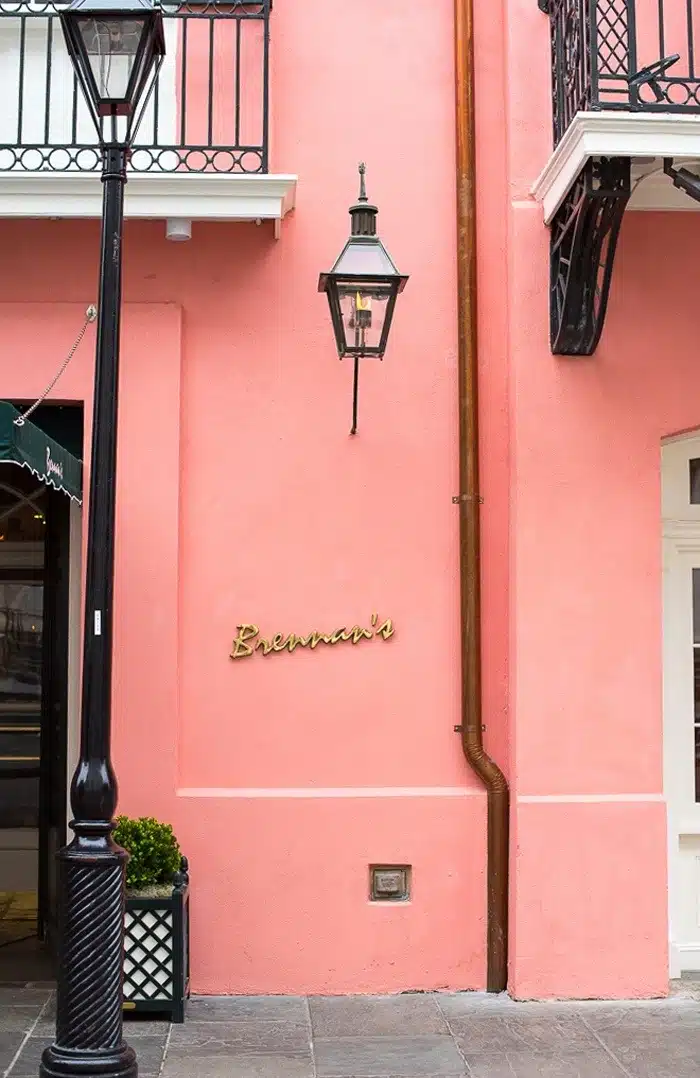
New Orleans Cuisine
Ok, so if you’re anything like me, food plays a prominent role in how you travel. Like, sometimes I’ll plan my entire day around restaurants I know I want to hit up in a new city. And if you’re in New Orleans—well known for its food—then you’ll be a very happy traveler!
The home of Creole and Cajun cuisine, as well as soul food, New Orleans has one of—if not THE most—recognizable culinary foodscapes in the entire United States.
New Orleans invented the po’ boy, oysters Rockefeller, pampano en papillote, muffuletta sandwiches, and even gumbo, which is the official state cuisine of Louisiana!
While New Orleans cuisine may be heavy, it’s also the food that dreams are made of. There’s a lot going on here; a lot of mixing of influences and cultures that have made it what it is today.
It could seem overwhelming, but one way to really get those taste buds going is to join a walking tour of the top foodie spots of the city. Not only will you get an education on the food, but you’ll get to hit up local spots that you may not have otherwise visited.
Learn the flavors of the French Quarter, dine in courtyards, and generally have an unforgettable time. Trust me, people—a food tour is a way to go. I could just spend days eating my way around the city.
But if you like cooking as well as eating, then another great way to experience the gastronomic traditions of New Orleans is to book yourself into a cooking class. That way you get one of the best souvenirs ever—learning how to cook the food you loved on your trip!!
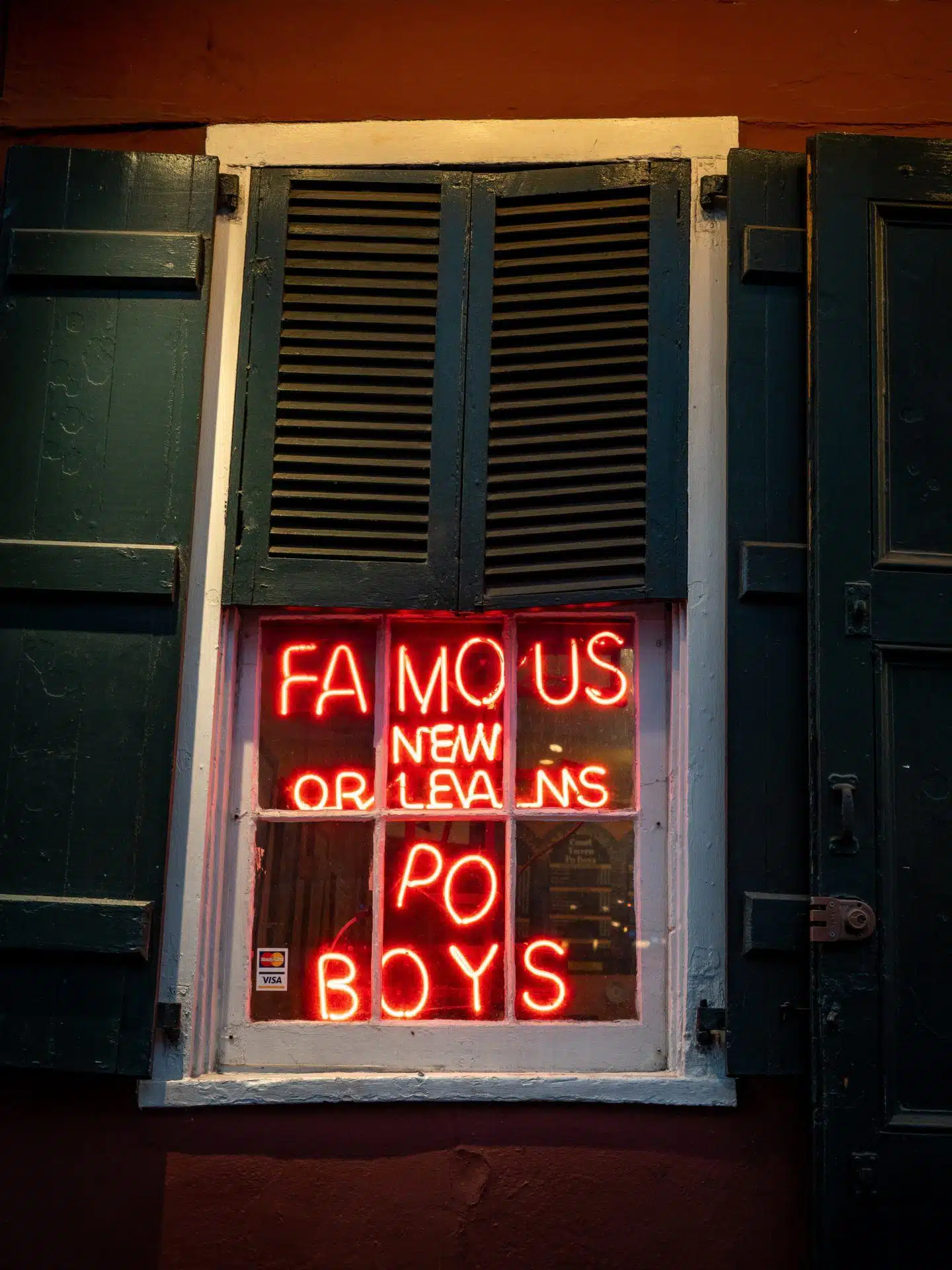
Acme Oyster House
So are you hungry? Good!
One place you should definitely make a beeline for if you’re looking for foodie things to do in New Orleans is the Acme Oyster House.
Trust me—this place is an institution!
Now a chain, the original New Orleans Acme Oyster House started up in 1910. First opening its doors as the “Acme Cafe” on Royal Street in the French Quarter, it’s been serving up delicious dishes since then.
It did move to its current location after a fire, but that was back in 1924, so it’s been at its present site for almost 100 years!
And it remains a casual, lively joint to chow down on Cajun and Creole classics—from fried shrimp and roast beef po’ boys too—of course—chargrilled oysters. Any trip to New Orleans would not be complete without stopping by for a snack at the very least!
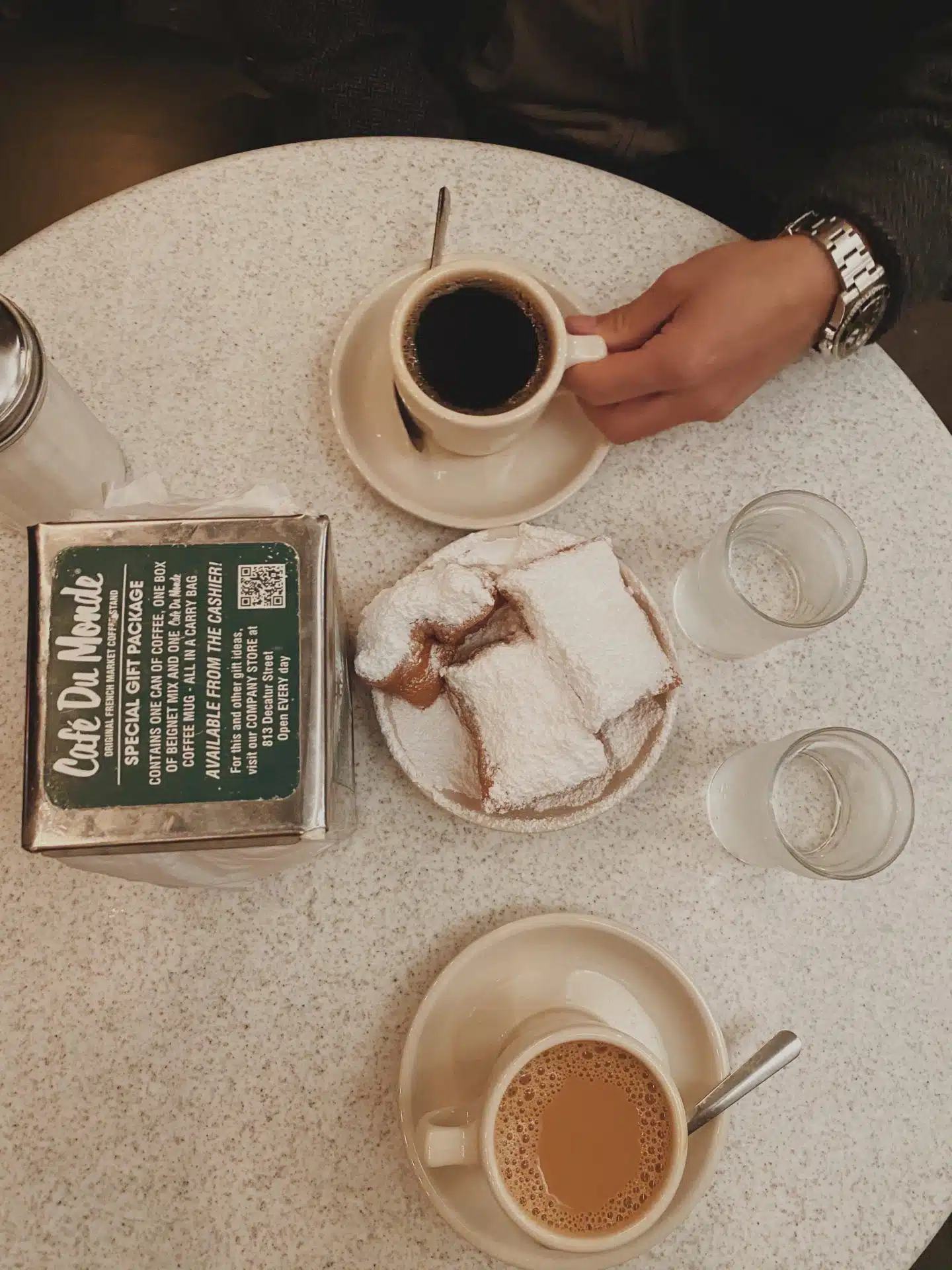
Cafe du Monde
Speaking of food, one spot that you should definitely NOT miss out on is the iconic Cafe du Monde.
This New Orleans institution has been serving up tasty treats—and creamy cafe au lait—since 1862.
Maybe you’re thinking, sure, I’ll skip this one—all hype and no taste.
But that would be a BIG mistake. A trip to Cafe du Monde is definitely worth your time.
Pretty much unchanged since the Civil War, the cafe is old fashioned and has a view of Jackson Square, making it a great spot for people-watching. But it is also particularly well known for its cafe beignets.
Beignets are puffy pillows of goodness (choux pastry deep-fried and coated in sugar). You pretty much have to try them when you’re here—and when you order them, eat them while they’re warm!
Though it’s open 24 hours a day, the cafe is pretty busy most of the time. Even for breakfast (highly recommended), you’ll have to wait around 20 minutes to get a seat, and even longer on weekends.
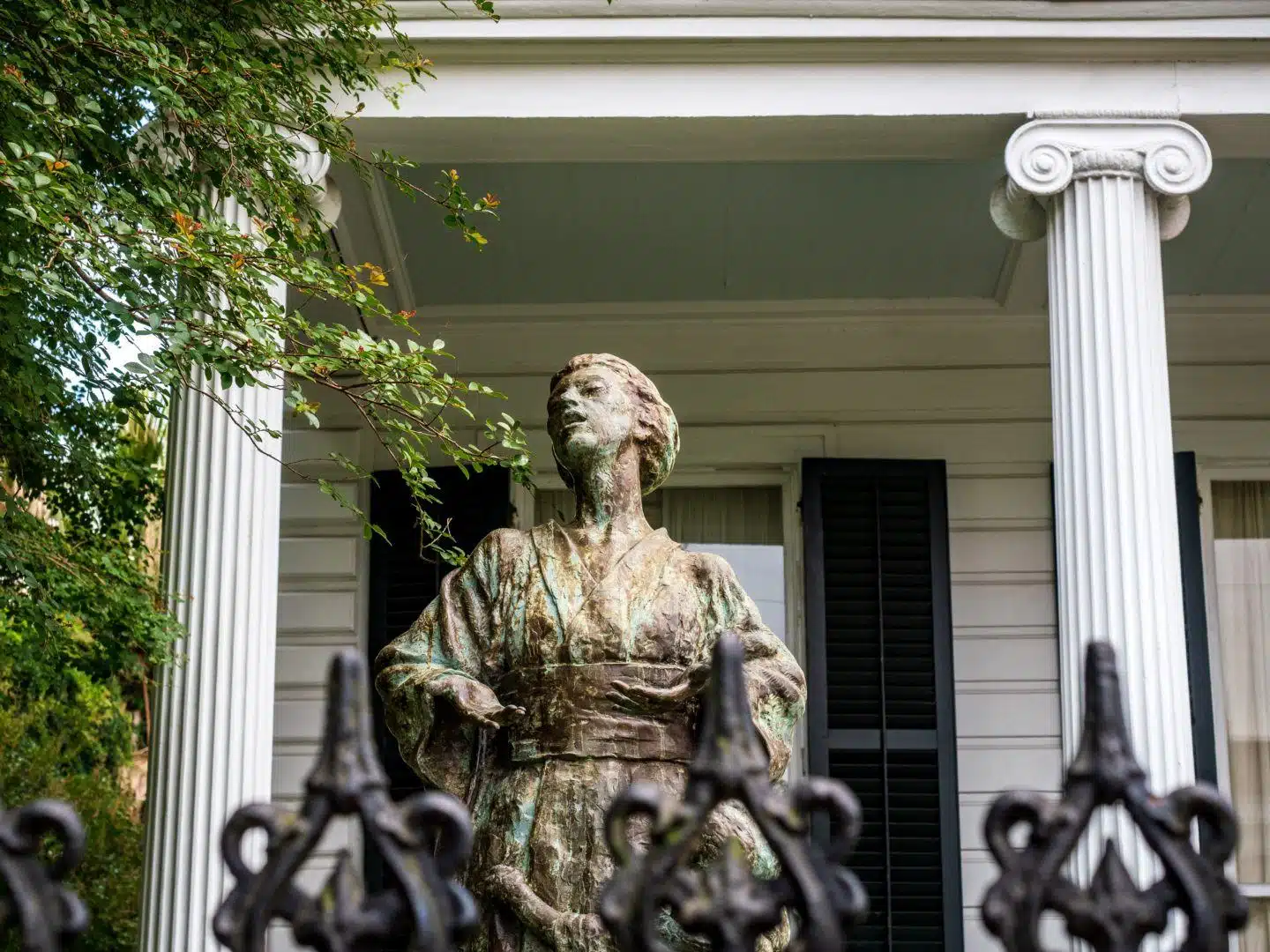
Garden District
The Garden District may not be as famous as the French Quarter, but it’s one of the best places to explore in New Orleans if you want to soak up a different sort of vibe.
There are oak-lined streets with centuries-old wooden houses to admire. It’s a perfect way to show off New Orleans on your Insta without posting that view of Bourbon Street that everyone’s seen a million times.
Honestly, there are some truly amazing houses—scratch that, let’s call them mansions—located all around Garden District. These are beautiful slices of architecture from before the Civil War, and the people who live in them really make sure they care for them.
There are perfectly manicured English style gardens surrounded by wrought-iron fences, Greek revival facades, and a general WOW factor that makes this place a literal joy to wander.
My tip? Go in the morning for a walk in the Upper Garden District specifically. This will give you an antidote to the more touristed areas, and probably a gentle walk to nurse a sore head from the night before!!
Make sure to stop by Lafayette Cemetery No. 1—one of the oldest cemeteries in the city. Sure, it may be a cemetery, but it is pretty beautiful.
Whitney Plantation
Another plantation that’s just under an hour’s drive from New Orleans, Whitney Plantation is a historic spot that is dedicated to telling the story of slavery in the US.
Set along the historic River Road, on the grounds of a former rice, sugar, and indigo plantation dating back to 1752, the house tells a dark chapter of the world’s history—and tells it in an innovative, impactful way.
Each visitor to the museum gets a lanyard to wear around their neck. On this lanyard is a card with a name and information about that person’s life. So as you move around the Whitney Plantation, you will be able to feel a more personal connection to this complex and difficult history.
The grounds of the big house itself are immaculate. The “big house” itself might seem distasteful to keep, but it shows the extreme privilege and disconnection that its owners had with those that were enslaved.
If you’re on a tour, your guide will also take you through slave cabins and outbuildings—recommended for a deeper understanding of just what happened here.
Jackson Square
The center of the French Quarter, this part of the district is all about its history and buzzing atmosphere. In fact, the square is actually a National Historic Landmark and it’s not really hard to see why. It was in Jackson square, in 1803, that Louisiana was officially made part of the United States.
Today Jackson Square is where all things old and new about New Orleans combine for fun and festivities. With the stunning St. Louis Cathedral standing proudly at one end, the square is edged on two sides by the red-brick Pontalba Buildings.
Inside the long buildings is a variety of shops and restaurants to spend some time browsing and sampling tasty treats. Built in the 1840s, apartments in the upper floors of the buildings are the oldest and most continuously-rented out in the all of North America. #vintage
For more chic shopping, the renovated old Jax Brewery building houses boutiques and a scattering of restaurants too.
Jackson Square is a vibrant place with street performers and musicians making a party vibe all the time, but if you’re lucky enough to be in town during a concert or festival, you should totally head down to Jackson Square to catch a live show.
Central Business District
Similar to what you might consider “Downtown,” the Central Business District of New Orleans is still a place you should visit.
A busy, bustling, business-minded area, it may not seem like a destination worthy of your New Orleans itinerary, but you should think again. There’s more going on here than you would expect.
One part of the CBD in particular that you should visit is Lafayette Square. The historic architecture and grand government buildings here are pretty cool in themselves, and there are a few museums that you should check out, too.
But probably my favorite thing about Lafayette Square is the fact that there are free concerts put on here every Wednesday. Expect all sorts of music. And being in the CBD, not the more touristed areas of the city, there are many locals who are lured by the live music in this big city district.
There’s even a blues festival held at Lafayette Square in the fall—something to bear in mind if you are planning to visit during that time.
If you want some cocktails while you’re in the CBD (who wouldn’t?), then my top recommendation for that would be The Sazerac Bar. It’s named after what is thought to be the world’s first mixed drink, made at its present location in the Roosevelt Hotel. Old world elegance awaits!
The National WWII Museum
One of the many museums in the Central Business District, the National WWII Museum is a big draw for anybody interested in history.
As much a part of New Orleans history as it is part of US history as a whole, this museum examines the American experience during World War II.
Inside, you can hear first-hand oral histories from many of the participants of the war, check out artifacts from the time, and learn more about the goings-on thanks to many of the interactive exhibits.
You can learn why the war was fought, how it was won, and the impact that it had on our modern world.
It might not be for everyone (especially if history is totally not your thing), but the architecture of this definitively modern museum is pretty impressive! It’s a striking testament to how much WII has affected the world we live in today.
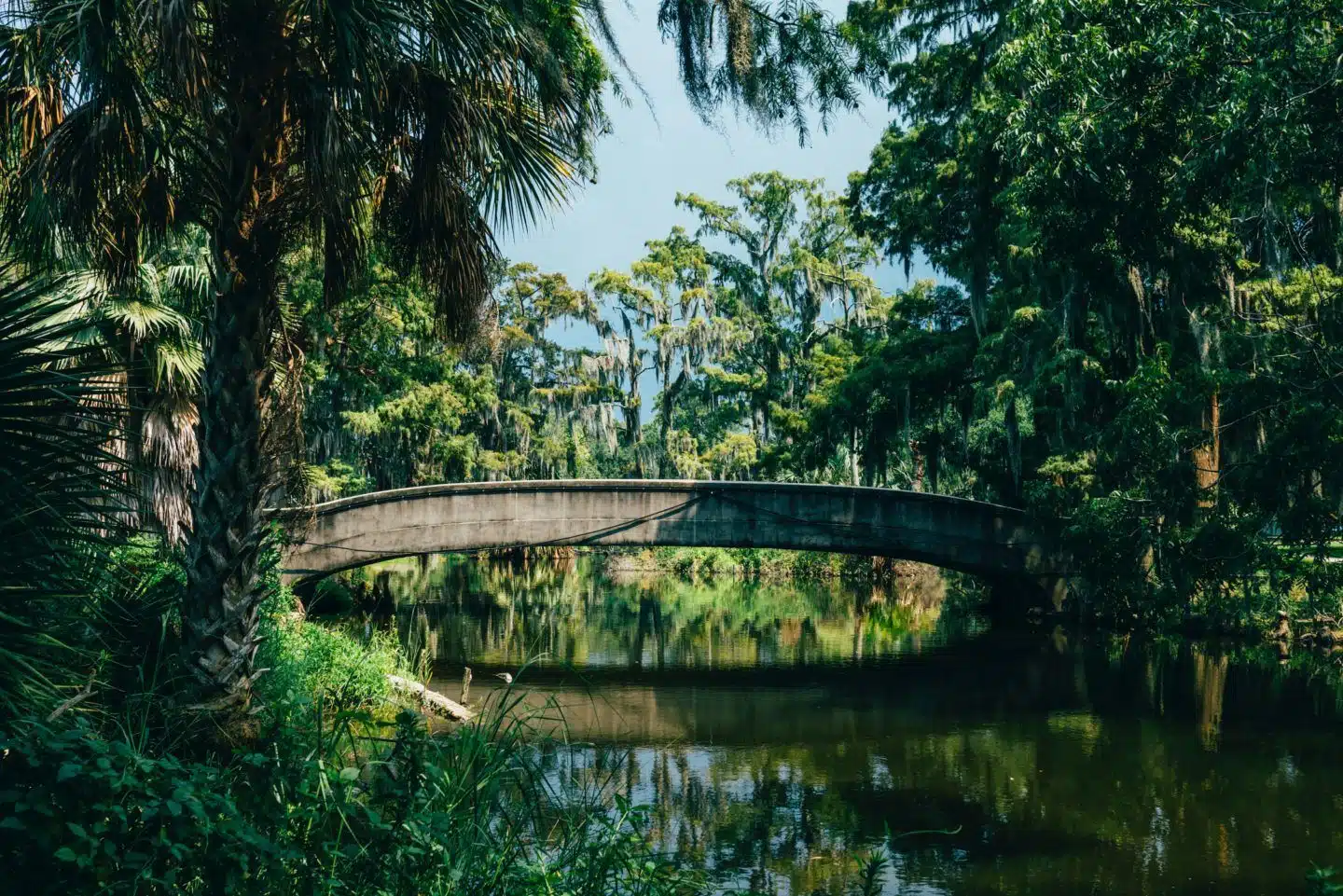
New Orleans City Park
If you ever feel like taking some time out from the urban streets and party atmosphere of some areas of New Orleans, then you’ll probably want to find some green space where you can refresh.
For me, the destination for doing just that is New Orleans City Park.
The 20th most-visited city park in the whole of the United States, New Orleans City Park is 50% larger than Central Park, and when you’re here, you can definitely feel it.
One of the coolest things about New Orleans City Park is the fact that it actually boasts the largest collection of live oaks (aka evergreen oaks) in the entire world. In fact, some of these oaks are actually more than 600 years old—that’s older than the United States itself!!
There are so many other cool aspects to this park—waterways, bridges, a ton of walking trails, places to picnic, and generally chill the heck out. Put this on your New Orleans itinerary if you’re partial to scoping out some nature on your travels.
Swing by in the morning, have a coffee and breakfast at Morning Call Cafe, then head out to stroll through the wildflowers and ancient trees of this awesome city park.
Go on a Ghost Tour
New Orleans is an old city. Old cities have two things in common—history and ghost stories.
If you like your trips spooky, then you’re in luck—there are a ton of ghost tours you can go on in New Orleans, each one hitting up historic spots of the city and investigating what may or may not have happened in them in the past.
Ghost tours in New Orleans usually take place in the oldest part of the city—the French Quarter of course—but there are plenty of other spots around the city that have their fair share of scary stories and alleged hauntings.
One spot is St. Louis Cemetery No. 1. This historic graveyard was first established by the Spanish in 1789. Naturally, stories abound of ghostly sightings of everyone from pirates to the “Queen of Voodoo.”
Another place that you may get to see is Lafitte’s Blacksmith Shop Bar. Dating back to the early 18th century, this spot is allegedly the oldest place calling itself a “bar” in the United States. According to legend, the bar was a base for Jean Lafitte, a notorious pirate.
Go shopping on Magazine Street
Food, music, and history may be some of the more famous things you can check out on your trip to New Orleans, but shopping is definitely a thing that you can do here, too!
And for that you should head to Magazine Street.
Following the course of the Mississippi River, the street takes its name not from glossy magazines but from an ammunition magazine that was once located here.
Magazine Street runs for six miles through varying neighborhoods and makes for a pretty cool place for all your shopping needs.
A good way to get a feel for New Orleans is to simply stroll down the street. You don’t have to spend any money at all (though you can if you want!).
With its small-town “Main Street” feel, there are a load of different shops along here to window (or actually) shop at, from vintage clothing stores to some more luxury outlets.
You could even go get yourself a hat made at an authentic, traditional hatmaker’s. Or you may want to stop off at the very local Octavia Books to pick up some reading material for your trip. There’s a ton of variety of stores to wander through!
And for all you market fiends out there, at 211 Magazine Street, there’s “The Shops,” a mini marketplace where you can pick up antiques, local crafts, and jewelry.
Shopping always makes me hungry (lol, shopping is my cardio), so if you feel like a slice of pizza, there’s Pizza Domenica. If you want a freshly made baguette, make a beeline for La Boulangerie.
New Orleans Jazz Museum
As I mentioned, New Orleans is famous for jazz. If you are a music fan, and even if you’re not, jazz is absolutely a highlight of this vibrant city.
Situated in what was once the United States Mint, the Jazz Museum is in a historic building that now houses exhibits dedicated to jazz. The motto is “Jazz in the very place it was born.”
The New Orleans Jazz Museum is located on the intersection between the French Quarter and Frenchmen Street.
Not only can you learn about jazz here, but you can also head to the museum for some live music, too!
There’s a performance venue here, where evening concerts showcase jazz talent from the local area.
Tennessee Williams Literary Festival
Tennessee Williams fan? Then you’ll probably already know that New Orleans is the setting for two of the famous playwright’s major works—A Streetcar Named Desire, and Vieux Carre, both of which are set in the French Quarter.
Because of his connection to the city (he also lived in New Orleans), the Tennessee Williams Literary Festival is held in his honor each year (around his birthday) for an extravaganza of literary proportions.
Think book fairs, workshops on writing, literary walking tours, and even a spot of cocktails, networking, and culinary delights—it is New Orleans.
If you want some great travel tips, then listen up: one thing you should definitely do to add to this festival (or if you happen to be in town when it’s NOT on) is to ride one of the famed New Orleans streetcars.
The streetcar of “A Streetcar Named Desire” is no longer in service, but the historic St. Charles Streetcar Line is well and truly still up and running. This cool way to get around can shuttle between historic destinations and important spots during the Literary Festival, such as the New Orleans City Park.
One cool thing that happens in the French Quarter during the Literary Festival is the Stella Shouting Contest, in which participants channel their inner Stanley Kowalski and shout “Stellaaaa!!!” at the top of their lungs.
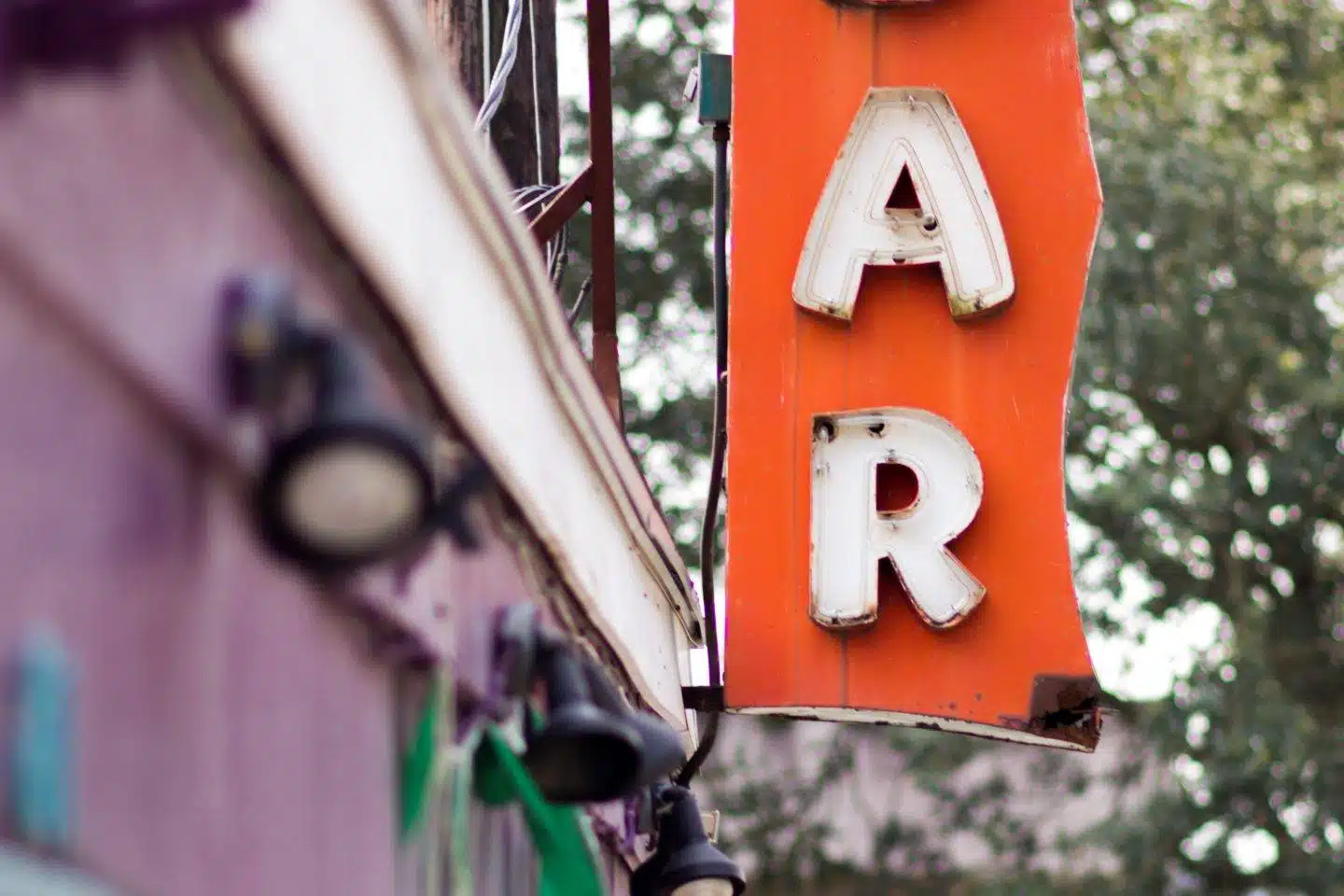
Bywater
Bywater is an under the radar neighborhood sandwiched between the 9th Ward and Faubourg Marigny. This is a local neighborhood that has had something of a hipster uptick in recent years.
Yes, that means this once slightly run-down area is now strewn with cool cafes in renovated buildings, artistic street art adorning walls, and record stores in repurposed shops.
It has a Williamsburg sort of vibe to it, but of course, it’s New Orleans, so it’s laid back, community-minded, and unpretentious in its flair and creativity.
The French, Spanish, and Caribbean colors now adorning the buildings make this a very vibrant area to explore. It is definitely not the average tourist experience to visit this area; there are no famous spots, but if you are looking for one of coolest off the beaten track things to do in New Orleans, exploring Bywater has got to be it!
Some of the top spots here include the much-loved Dr. Bob’s Folk Art, a fun gallery filled to the brim with all sorts of crazy creations that’s totally fun to walk around (I literally adore their “Be Nice Or Leave!” sign). Another place to hit up is Euclid Records, a definitively cool record store where crate-diggers could lose themselves for hours.
So, there you have it guys—my epic travel list of all the very best stuff and things to do that you can put on your New Orleans itinerary.
If you only have enough time for a one or two-day itinerary, there’s still a lot of cool stuff that you can fit into your trip to this awesome city. Strolling the Garden District, hitting up the French Quarter, and having a beignet at Cafe du Monde is the very least you could do!
If you’ve got longer? That’s great! You can party on Bourbon Street, go for a stroll around New Orleans City Park, see a show in Lafayette Square—there are so many things that are going to make your time in New Orleans literally the best ever.
If you plan to visit New Orleans, let me know! Tag me in your Insta stories and pics—I’m @wtfab. I love this city!
Planning a trip to New Orleans? Be sure to explore my other New Orleans content here.
Best Restaurants In New Orleans
Photos from New Orleans
FAQs
The best time to travel to New Orleans is from February to May when the weather will be at its best. If you want to avoid large crowds for Mardi Gras, it is recommended to travel from December to January.
It is recommended to spend at least 4 days in New Orleans to really get a feel and explore the diverse city.
No, you do not need a car in New Orleans since everything is walking distance from each other.

Elise Armitage is an entrepreneur and founder of What The Fab, a travel + lifestyle blog based in California. At the beginning of 2019, Elise left her corporate job at Google to chase her dreams: being an entrepreneur and helping women find fabulous in the everyday. Since then, she’s launched her SEO course Six-Figure SEO, where she teaches bloggers how to create a passive revenue stream from their website using SEO. Featured in publications like Forbes, Elle, HerMoney, and Real Simple, Elise is a firm believer that you can be of both substance and style.
